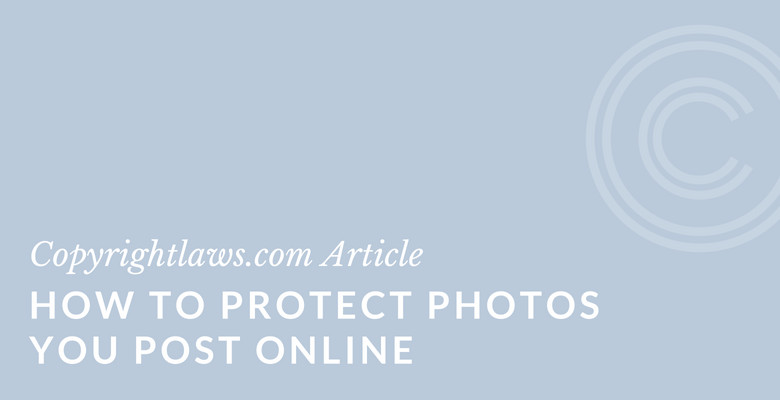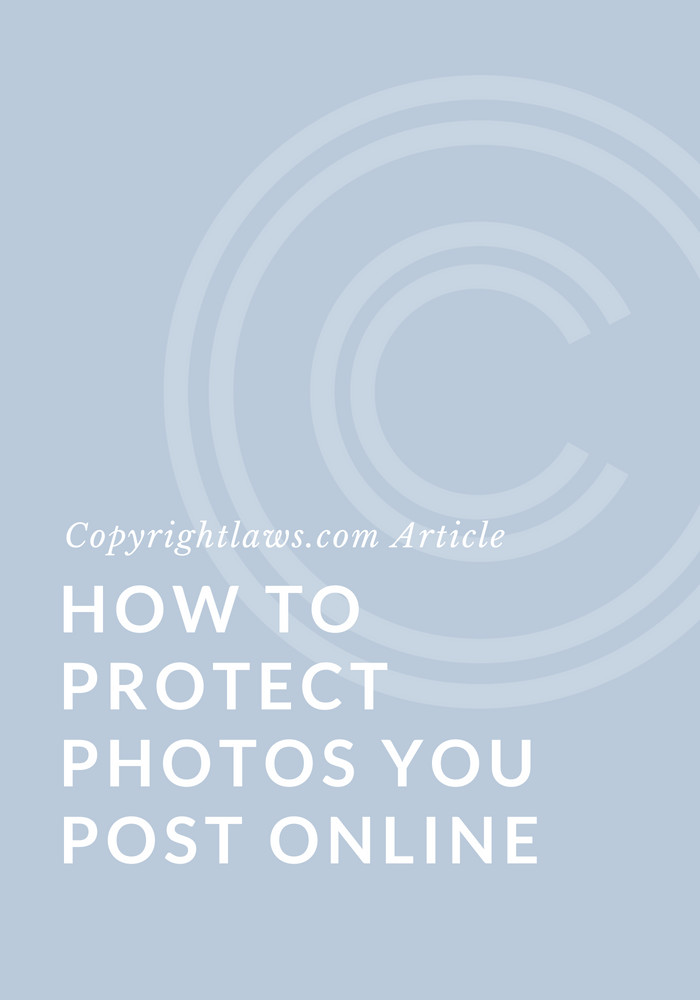So, you’ve snapped a stunning photograph. Whether it’s a breathtaking landscape, a candid portrait, or a perfectly timed action shot, your photos are more than just digital files – they’re your creations, and you have rights to them. Many photographers, from hobbyists to professionals, wonder about securing these rights. The good news is, in many parts of the world, including the U.S. and numerous countries adhering to the Berne Convention, copyright protection is automatic the moment you capture that image. But what does this really mean, and how do you truly “copyright” a photo to safeguard your work, especially online?
Understanding Automatic Copyright Protection: It Starts When You Click
You might be surprised to learn that copyright protection for your photographs exists instantly. From the second you press the shutter button on your camera or tap the screen on your smartphone and the image is saved, your photograph is automatically protected by copyright. This is thanks to international agreements like the Berne Convention, which has been adopted by over 180 countries. This automatic protection applies regardless of the equipment you use – be it a professional DSLR, a smartphone camera, or even a tablet.
As soon as your photograph is “fixed” in a tangible medium – saved on a memory card, your phone’s storage, or a hard drive – it is automatically copyrighted in the U.S. and other Berne Convention member countries.
This means you don’t have to jump through hoops to gain copyright. You don’t need to officially register your work immediately, nor do you have to add the © symbol to your images right away for basic protection to exist. However, while copyright is automatic, taking further steps like registration and using copyright notices can significantly strengthen your ability to enforce your rights, especially if you plan to share your work online or commercially.
Formalizing Your Copyright: Registration with the U.S. Copyright Office
While automatic copyright provides a foundation of protection, registering your photographs with the U.S. Copyright Office (USCO) offers significant advantages, particularly when it comes to enforcing your rights in the United States. Think of registration as formalizing your copyright and making it more robust.
Registering your photos isn’t mandatory for copyright to exist, but it unlocks several key benefits:
- Prima Facie Evidence: If you register your photograph within five years of its first publication, the registration serves as prima facie evidence in court that your copyright is valid. This strengthens your legal position in case of infringement.
- Necessary for Infringement Lawsuits: In the U.S., you generally must register your work with the USCO before you can file a copyright infringement lawsuit in federal court for works of U.S. origin. Registration is a prerequisite to taking legal action.
- Statutory Damages and Attorney’s Fees: If you register your photos before an infringement occurs, or within three months of publication, you become eligible to claim statutory damages and attorney’s fees in a successful infringement lawsuit. Statutory damages are pre-set amounts that can be awarded by a court, even if you can’t prove actual financial loss. Attorney’s fees can help cover your legal costs. Without registration, you are typically limited to recovering only actual damages and lost profits, which can be harder to prove.
 Copyright symbol and notice example
Copyright symbol and notice example
You can register your photographs with the USCO at any point after they are created, even years later. However, registering sooner is generally better. It establishes an official record of your copyright and its creation date with the USCO, which can be valuable evidence. For detailed guidance on registering photographs, you can visit the USCO’s dedicated page on copyright registration for photographs.
Even if you reside outside the U.S., registering with the U.S. Copyright Office can still be beneficial. It provides a recognized record of your copyright that could be useful in international copyright disputes. Additionally, consider investigating if your own country has a voluntary copyright registration system that offers similar advantages.
When Is Registration Considered Valid for Lawsuits?
A landmark U.S. Supreme Court case, Fourth Estate v. Wall-Street.com (2019), clarified precisely when copyright registration becomes effective for the purpose of initiating an infringement lawsuit. The Court ruled that registration is only considered “made” under the U.S. Copyright Act (section 411) after the USCO has either approved or rejected the registration application. Simply submitting an application is not enough.
This ruling underscores the importance for photographers, especially those who anticipate needing to enforce their copyright, to register their images promptly after creation. While the USCO offers expedited registration for a higher fee, timely standard registration is a crucial step in securing your legal rights.
Practical Steps to Enhance Your Copyright Protection (Beyond Registration)
Beyond formal registration, there are several practical, and often free, steps you can take to further protect your photographs, particularly when sharing them online. These actions serve as both preventative measures and clear communication of your copyright.
Using the Copyright Symbol and Notice
One of the easiest and most widely recognized ways to assert your copyright is by using the copyright symbol, ©, accompanied by a copyright notice. While not legally required for copyright protection to exist, a copyright notice is a valuable tool, especially in online environments.
Displaying a copyright notice is particularly important when you share your photos in public online spaces, such as your website, blog, online portfolios, e-commerce platforms where you sell photos, or social media platforms like Instagram or Flickr.
Many people mistakenly believe that content found online, especially on social media, is free to use. The copyright symbol and notice serve as a gentle yet clear reminder that this is not the case. It educates viewers that your images are indeed protected by copyright and clearly identifies you as the copyright owner.
A standard copyright notice generally includes three elements:
- The copyright symbol: © (the letter “c” enclosed in a circle), or the word “Copyright,” or the abbreviation “Copr.”
- Your name as the copyright owner.
- The year of first publication of the photograph.
These elements don’t need to appear in a specific order. Here are a few examples of copyright notices:
- © Jane Doe 2023
- Copyright © Jane Doe 2023
- © 2023 Jane Doe
Consider also adding a copyright policy or dedicated copyright page to your website or blog. This page can explain your copyright practices in more detail, reiterate that your images are protected, and provide contact information (ideally a clickable email link) so individuals can easily request permission for image usage.
Creative Commons Licenses: Sharing with Conditions
If you are open to allowing certain types of use of your photographs while still retaining copyright, consider using a Creative Commons (CC) license. CC licenses offer a flexible way for copyright holders to grant permissions for others to use their work under specific terms and conditions.
As stated by Creative Commons:
Our tools give everyone from individual creators to large companies and institutions a simple, standardized way to grant copyright permissions to their creative work. The combination of our tools and our users is a vast and growing digital commons, a pool of content that can be copied, distributed, edited, remixed, and built upon, all within the boundaries of copyright law.
 Creative Commons Licenses
Creative Commons Licenses
With CC licenses, you choose the specific permissions you want to grant. There are various types of CC licenses that allow for different uses, such as commercial vs. non-commercial, allowing modifications vs. no modifications, and requiring attribution vs. public domain dedication. Anyone can then use your images according to the terms of the chosen license. For uses beyond the scope of the license, they would need to seek your direct permission.
It’s important to note that CC licenses are designed for works protected by copyright and are not applicable to works already in the public domain. If you find CC licenses confusing, resources are available to help you understand the different license types and choose the most appropriate one for your photos. Learn more about selecting the right CC license at Creative Commons Licenses: How to Choose the Best CC License.
Monitoring for Unauthorized Use
Protecting your photos online also involves actively monitoring how your images are being used. Regularly checking for unauthorized uses is a crucial aspect of safeguarding your copyright.
Make it a habit to perform reverse image searches on search engines like Google (or others) periodically, perhaps monthly. This allows you to discover websites or online platforms that may be using your photographs without your authorization.
If you find instances of unauthorized use, take proactive steps. Typically, an initial step is to send a polite but firm email to the website owner or platform administrator. In your email, clearly state that their use of your image is unauthorized and specify the remedy you are seeking. Possible remedies could include:
- Requesting immediate removal of the photograph.
- Asking for proper attribution and a link back to your website or online portfolio.
- Demanding payment for past and future use of the image, especially if it’s for commercial purposes.
If your initial communication is ignored or unresolved, and the unauthorized use is causing significant harm, you may need to consult with a copyright lawyer to explore further legal options.
Key Takeaways: Copyrighting Your Photos Effectively
To summarize, “copyrighting” your photos is a multi-faceted process that starts automatically but can be strengthened through proactive steps:
- Automatic Copyright: As a photographer, whether amateur or professional, your photographs are automatically protected by copyright from the moment of creation in many countries.
- Understand Your Rights: Take the time to learn about your copyright rights and the ways to protect your photos, particularly when sharing them online.
- Proactive Measures: Implement practical steps such as adding copyright notices, considering Creative Commons licenses for controlled sharing, and registering with the USCO for enhanced enforcement options.
- Further Learning: Explore additional resources to deepen your understanding of digital copyright. See resources like Digital Copyright Questions and Answers and online copyright eTutorials for more in-depth information.
By understanding your automatic copyright and taking these proactive steps, you can effectively manage and protect your photographic work in the digital age.
